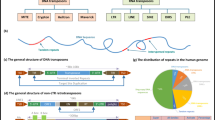Abstract.
Defined by the presence of four or more repeating units containing a conserved core of approximately 40 amino acids that usually ending with tryptophan-aspartic acid (WD), WD-repeat proteins belong to a large and fast-expanding conservative protein family. As demonstrated by the crystal structure of the G protein β subunit, all WD-repeat proteins are speculated to form a circularized β propeller structure. The importance of these proteins is not only demonstrated by their critical roles in many essential biological functions ranging from signal transduction, transcription regulation, to apoptosis, but is also recognized by their association with several human diseases. Defining the function of a WD-repeat protein is the current challenge. It is, however, paramount to uncover the function of individual WD-repeat proteins, explore the protein interaction mechanism through WD-repeat domains and, ultimately, understand the complex biological processes and organisms themselves.
Similar content being viewed by others
Author information
Authors and Affiliations
Additional information
Received 10 May 2001; received after revision 21 June 2001; accepted 29 June 2001
Rights and permissions
About this article
Cite this article
Li, D., Roberts, R. Human Genome and Diseases:¶WD-repeat proteins: structure characteristics, biological function, and their involvement in human diseases. CMLS, Cell. Mol. Life Sci. 58, 2085–2097 (2001). https://doi.org/10.1007/PL00000838
Issue Date:
DOI: https://doi.org/10.1007/PL00000838




